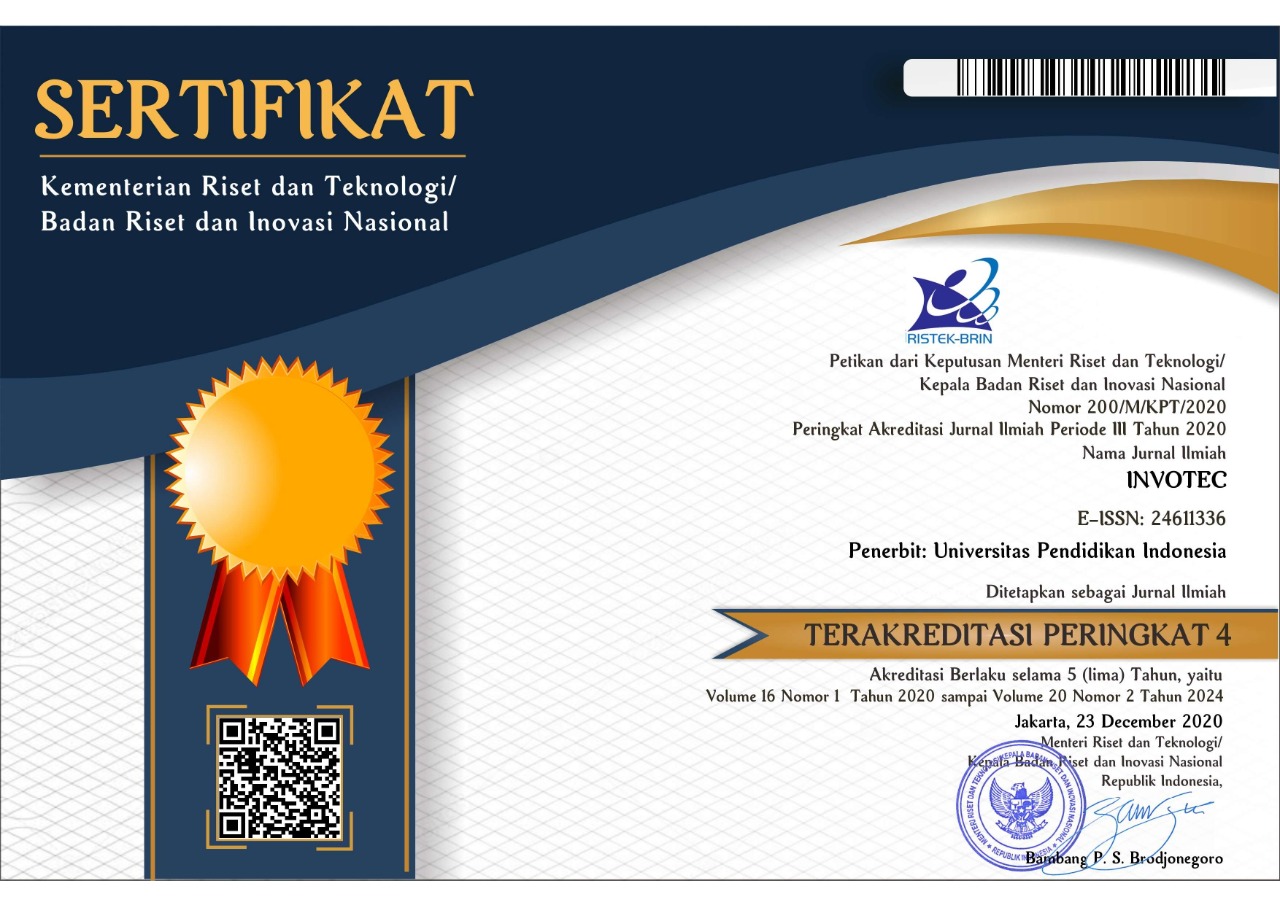Evaluasi Pemenuhan Standar Minimal Sarana dan Prasarana Pendidikan Dasar di Kota Bandung
Abstract
Full Text:
PDFReferences
Arikunto, S. (2006). Prosedur Penelitian Suatu Pendekatan Praktik. Jakarta: Rineka Cipta.
Arikunto, S . (1988). Evaluasi Program. Jakarta: P2LPTK.
Borg, W.R. & Gall, M.D. (2003).Educational Research an Introduction.Seventh Edition. New York: Longman.
Creswel, Jhon W. (1994). Research Design: Qualitative and Quantitative Aproach. London: Sage Publication.
Departemen Pendidikan Nasional. (2003). Undang-Undang Nomor 20 Tahun 2003 tentang Sistem Pendidikan Nasional. Jakarta, Biro Hukum dan Organisasi Depdiknas.
Departemen Pendidikan Nasional. (2007). Peraturan Menteri Pendidikan Nasional Republik Indonesia Nomor 24 Tahun 2007 Tentang Standar Sarana dan Prasarana Untuk Sekolah Dasar/Madrasah Ibtidaiyah (SD/MI), Sekolah Menengah Pertama/Madrasah Tsanawiyah (SMP/MTS), dan Sekolah Menengah Atas/Madrasah Aliyah (SMA/MA). Jakarta, Biro Hukum dan Organisasi Depdiknas.
Goodban & Hayslett. (1979). Gambar Dan Perencanaan Arsitektur, Edisi 3. Jakarta: Erlangga.
Joni, TR (1980). Evaluasi Program. Jakarta: P2LPTK.
Mangunwijaya, Y.B. (1981). Pasal-Pasal Penghantar Fisika Bangunan. Jakarta: Gramedia.
Muhibbin, Syah. (2004). Psikologi Pendidikan dengan Pendekatan Baru. Bandung: PT. Remaja Rosdakarya.
Neufert , E. (1996). Data Arsitektur, Edisi 33, Jilid 1. Jakarta: Erlangga.
Satwiko,P. (2004). Fisika Bangunan 1. Jogjakarta: Andi.
Singarimbun dan Efendi. (1995). Penelitian Survei. Jakarta: Gramedia.
Sudjana, N. (1989). Metode Kegiatan Partisifatif. Bandung: Sinar Baru Algensindo.
Sudjana, N. dan Rivai, A. (2001). Teknologi Pengajaran. Bandung: Sinar Baru Algensindo.
Sugiyono. (2007). Metode Penelitian Pendidikan: Pendekatan Kuantitatif, Kualitatif dan R&D. Bandung: Alfabeta.
Supriyadi, D. et al. (1996). Kurikulum dan Pembelajaran. Bandung: FIP IKIP Bandung.
Syamsuddin, A. (2007). Psikologi Kependidikan: Perangkat Sistem Pengajaran Modul. Bandung: PT. Remaja Rosdakarya
Usman, U. (2002). Menjadi Guru Profesional. Bandung: PT. Remaja Rosdakarya.
DOI: https://doi.org/10.17509/invotec.v7i1.6079
Refbacks
- There are currently no refbacks.
Copyright (c) 2017 Innovation of Vocational Technology Education
This journal provides immediate open access to its content on the principle that making research freely available to the public supports a greater global exchange of knowledge.

This work is licensed under a Lisensi Creative Commons Atribusi-BerbagiSerupa 4.0 Internasional.


